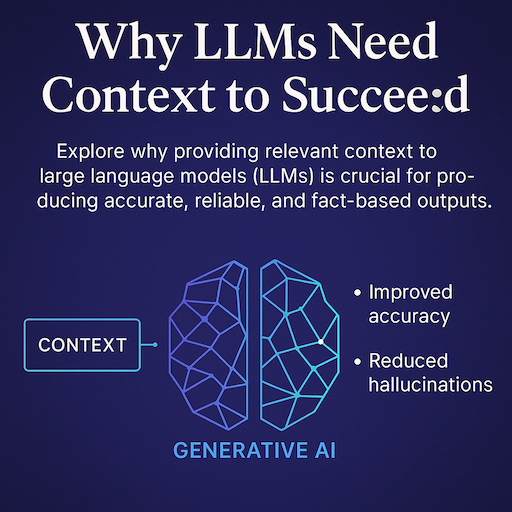Why LLMs Need Context to Succeed
Large Language Models are powerful, but without context they often fail to deliver accurate, relevant responses. Learn why grounding them in your data is essential.

The Power and Limitations of LLMs
Large Language Models like GPT-4 are trained on massive amounts of data from the internet, but that data ends at a specific point in time. These models have no awareness of your business, documents, or customers unless you provide that information explicitly.
Why Generic Answers Don’t Work
- LLMs can hallucinate when they don’t have access to real-world or domain-specific facts
- They often respond with plausible but incorrect answers
- Lack of personalization makes interactions less valuable for users
Context Is the Missing Ingredient
By grounding LLMs in your internal data — PDFs, policy documents, knowledge bases, even databases — you give them the context needed to respond accurately, factually, and helpfully.
This is where technologies like Retrieval-Augmented Generation (RAG) come in. Instead of relying only on model memory, RAG retrieves relevant chunks from your data and feeds it into the LLM before generating an answer.
Real-World Example
A customer support bot powered by a vanilla LLM might give generic answers. But with context from your help center, it can reference your exact refund policy, product features, or documentation — increasing trust and reducing ticket volumes.
How to Add Context to Your LLM
- Extract content from documents, websites, databases
- Split and embed the content using vector databases
- Use semantic search to retrieve relevant info
- Feed retrieved context + prompt to the LLM for final output
Conclusion
Language models are only as good as the context you give them. Grounding LLMs in real-time, domain-specific data not only improves accuracy — it unlocks the true potential of AI for business.